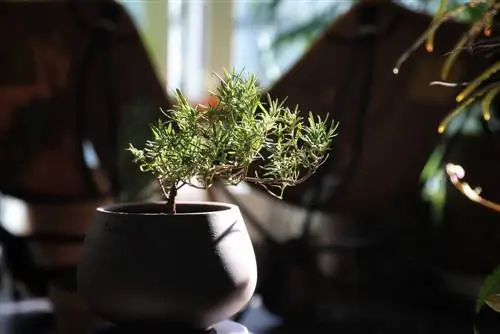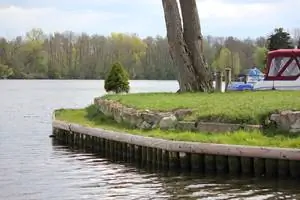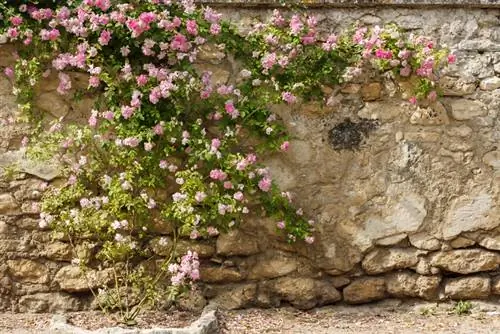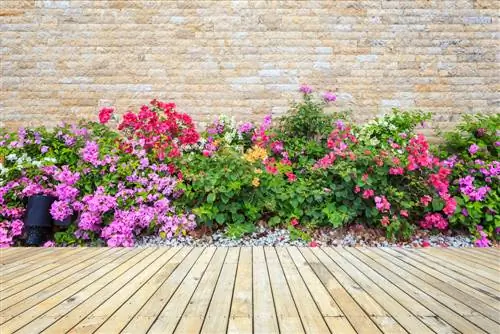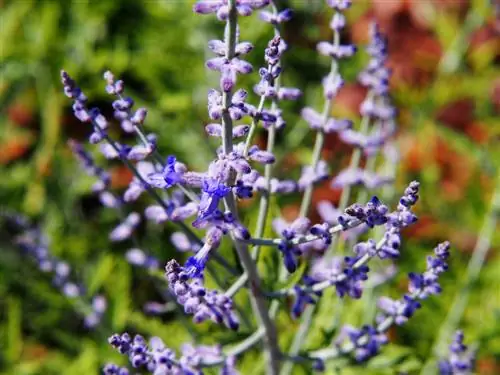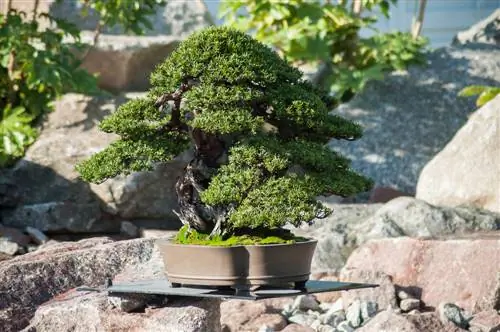- Author admin [email protected].
- Public 2023-12-16 16:46.
- Last modified 2025-01-23 11:22.
Few gardeners know that Rosmarinus officinalis is suitable as a bonsai. The herb is more commonly known as a spice. But because of the bark, even young specimens look like ancient and gnarled trees when properly cared for.

How do I care for and design a rosemary bonsai?
A rosemary bonsai requires a soil mixture of 40% standard soil, 40% acadama soil and 20% gravel or grit. The plant prefers a sunny location, moderate watering and regular fertilization. Shape the bonsai by carefully cutting and carefully bending the branches.
Claims
Rosemary grows in a soil mixture that consists of 40 percent standard soil for bonsai (€4.00 at Amazon) and acadama soil. The remaining 20 percent is gravel or grit. You are welcome to mix some lime into the substrate. Every two to three years the bonsai is happy about a substrate replacement.
Location
Rosmarinus officinalis is a heat-loving plant because it is adapted to mild weather conditions all year round in the Mediterranean region. Therefore, they are only placed in the garden after the last frosts have passed. A sunny spot is recommended outdoors. The shrub spends the winter in a cool and bright room where the temperatures are between five and ten degrees.
Watering and fertilizing
The water requirement is not particularly high. However, you should not allow the root ball to dry out completely. Check the soil daily during the summer months and water sparingly when necessary. Since the tree is evergreen, you must always keep the pot ball slightly moist, even in winter.
Nutrient supply:
- Fertilization takes place from April to September
- Mix liquid fertilizer into the irrigation water and administer every two to three weeks
- alternatively, place solid fertilizer balls on the substrate every six weeks
Design options
Since the species grows extremely slowly, you need a lot of patience when designing a bonsai. Good starting material saves you a lot of time. If you dare to approach this object, you will have access to bizarre growth forms such as semi-cascades, broom shapes or a windswept form.
Cutting
Rosemary requires continuous pruning so that it develops dense cushions. Continue shortening the fresh shoots as soon as they have reached a length of five centimeters. You can cut generously and leave about an inch. Cutting back into the old wood is not a problem because the Mediterranean plant sprouts reliably and develops beautiful branch cushions in this way. To encourage flower formation, leave the first shoots standing. Only prune this when the flowers have withered.
Wiring
The shrub forms bark that peels off with age and has a dark color that can be easily destroyed by wire. You should therefore avoid this design option. Since the branches grow tightly upright without shaping, the branch position needs to be corrected. By bracing, the branches can be brought into an almost horizontal shape. Branch clamps are used to form bends. You can carefully bend shoots that are not yet too thick and are slightly woody using aluminum wire.
Tip
To protect the tree, you should wrap the aluminum wire with paper tape. This means the material doesn't cut in as quickly.

